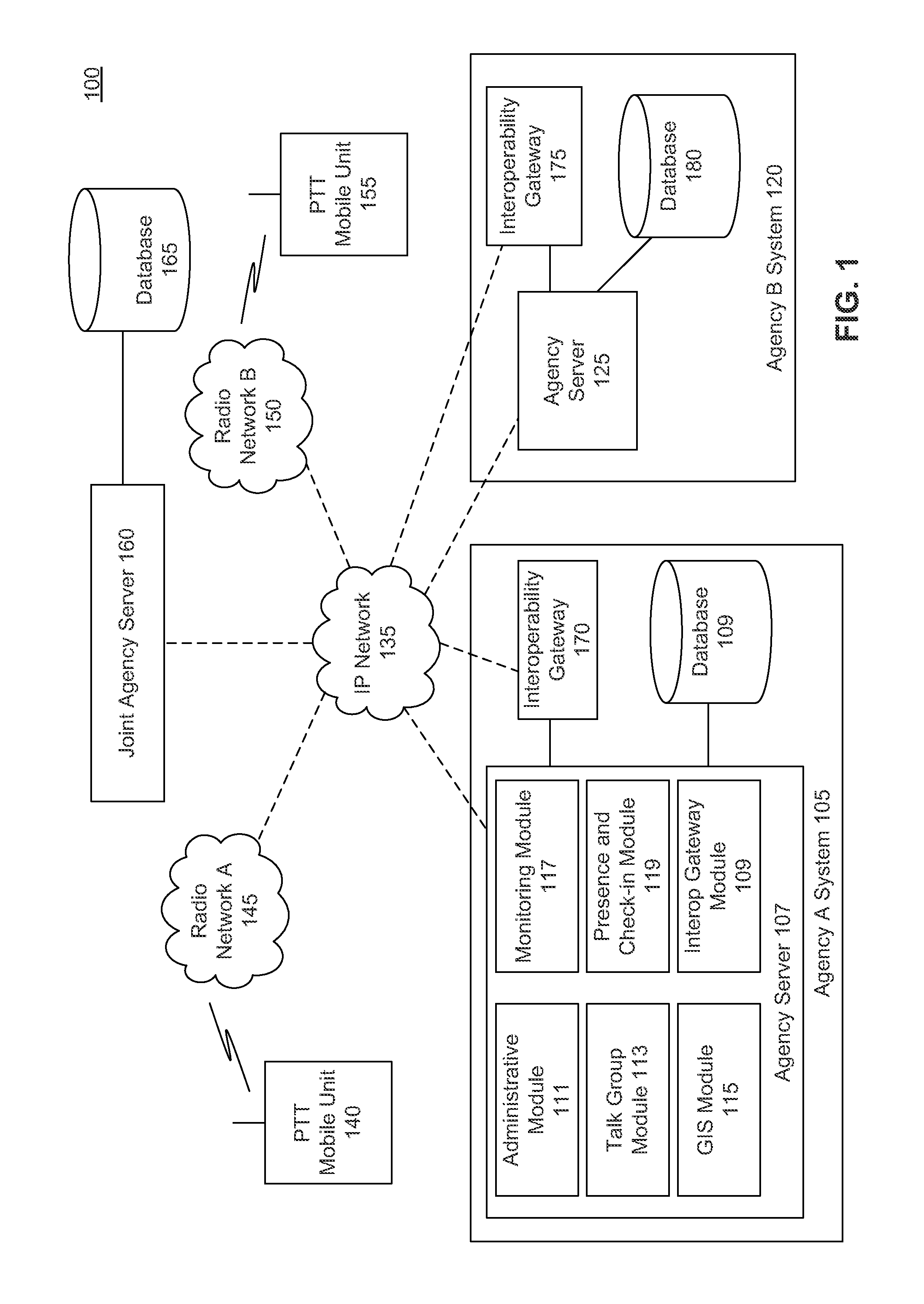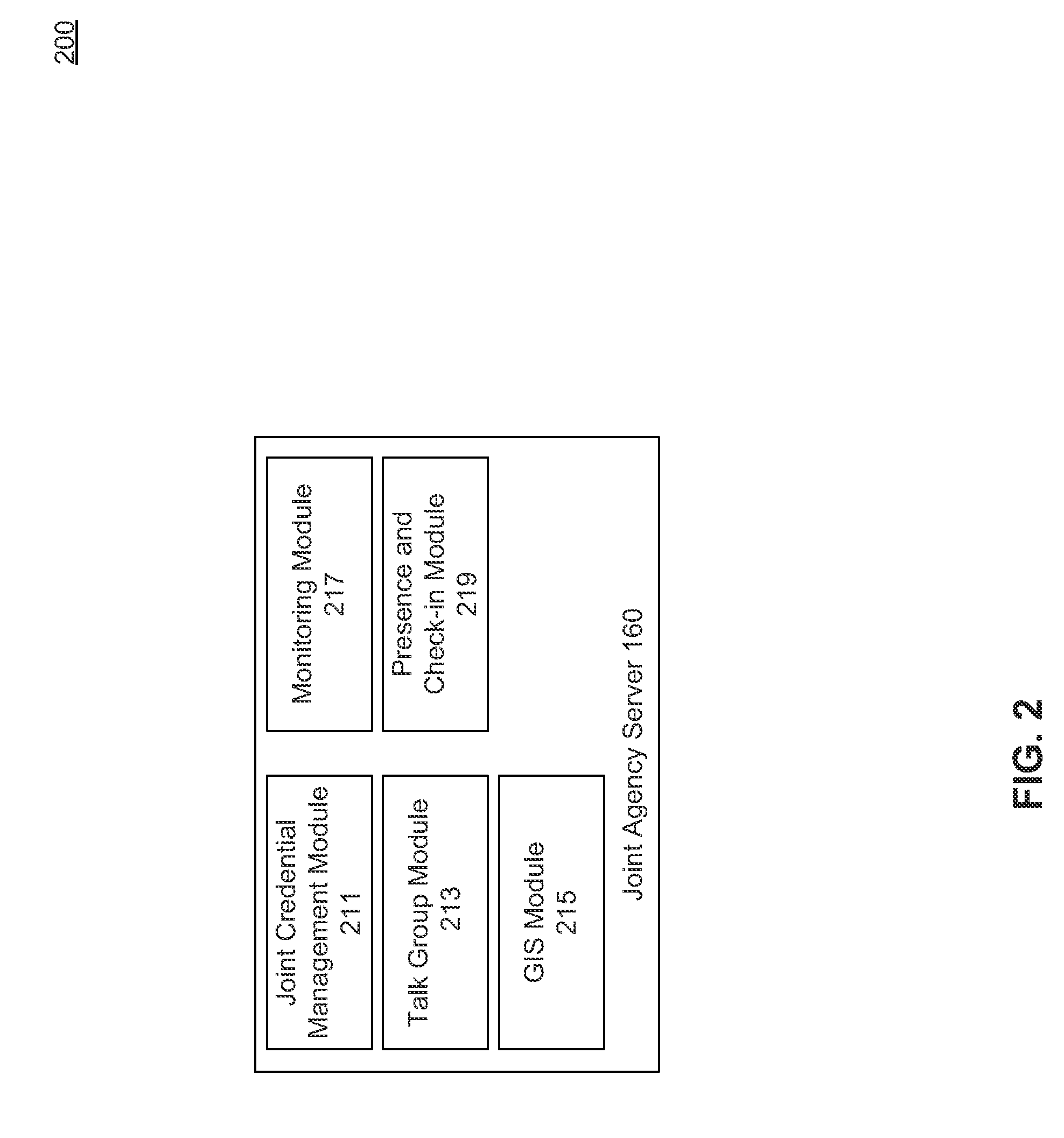Intelligent formation and management of dynamic talk groups
a dynamic and intelligent technology, applied in the field of electronic communications, can solve the problems of inability or unwillingness of the radio system(s) to grant control of its resources, the inability of the radio system(s) to communicate with each other, and the inability of the entity involved to fully and scalable implementation
- Summary
- Abstract
- Description
- Claims
- Application Information
AI Technical Summary
Benefits of technology
Problems solved by technology
Method used
Image
Examples
Embodiment Construction
Overview
[0023]When an incident occurs, an incident communications network and / or secure communications may be established among two or more agencies responding to an incident. Each agency may have a push to talk (PTT) administrator that creates and manages PTT user data, and each agency publishes information about their PTT users. The information published typically includes static and limited information. PTT administrators may create an inter-agency PTT talk group based on the published information. But, the inter-agency PTT talk group may be monolithic, and responding agencies typically experience time delays as they engage in complex coordination and relaying of multiple communications to issue credentials to responding agency personnel, manage their check-in for duty, and track the personnel on the incident site. The situation becomes even more difficult to determine and identify responding personnel having particular skills and / or equipment, let alone communicate geographic bo...
PUM
 Login to View More
Login to View More Abstract
Description
Claims
Application Information
 Login to View More
Login to View More - R&D
- Intellectual Property
- Life Sciences
- Materials
- Tech Scout
- Unparalleled Data Quality
- Higher Quality Content
- 60% Fewer Hallucinations
Browse by: Latest US Patents, China's latest patents, Technical Efficacy Thesaurus, Application Domain, Technology Topic, Popular Technical Reports.
© 2025 PatSnap. All rights reserved.Legal|Privacy policy|Modern Slavery Act Transparency Statement|Sitemap|About US| Contact US: help@patsnap.com



